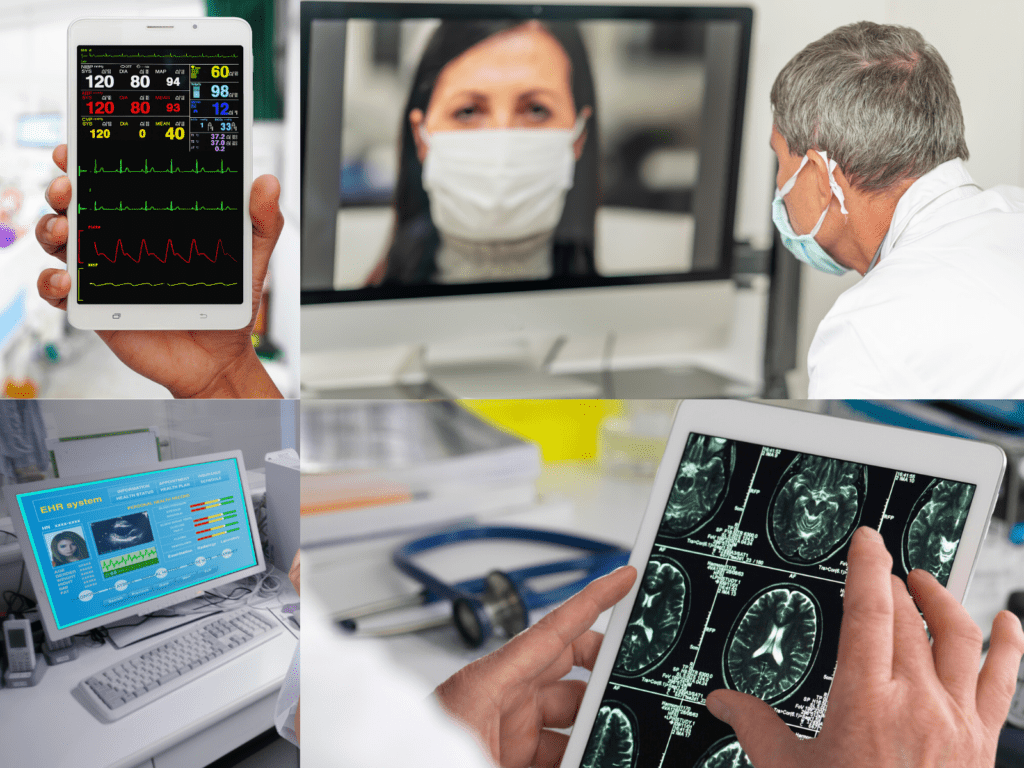
The disaster that is the COVID-19 pandemic will leave large numbers of chronically ill patients requiring treatment for lung scarring, neurologic conditions, and more for many years to come. A system already failing many and under-delivering to most will be further taxed.
The present crisis is exposing some of the many deficiencies in our system and revealing the need for a sweeping transformation of health care delivery. For years, technology has been pushed into medicine. Often these software systems and devices were created by individuals with little or no clinical experience and then touted as THE SOLUTION. In other cases, physicians created their own systems, which often more closely address the problems in medical practice, but usually do not leverage the technology to its fullest.
We and our patients deserve better.
We need medical technology solutions—not just packages and devices. So far, most electronic health records (EHRs) have created more burdens than they have relieved. Office software systems can stoke burnout. Most telehealth systems are little more than secure video chat systems tied to burdensome documentation system. To provide good care, providers need more. Physicians need help. Patients deserve better.
The costs of mediocre telehealth systems are ballooned by researchers and service providers alike. Functionality need not be sacrificed for wide availability and cost-containment. The level of care should not be dictated by proximity to a particular provider or facility. Patients, physicians, hospitals, and long-term care facilities deserve true state-of-the-art care and support that enhance self-sufficiency and sustainability. Such solutions will pose many new complexities in the care and treatment of both inpatients and outpatients. They will also create a host of opportunities.
As the pandemic has already made clear, a moderate surge in patients strains the system. A large influx of patients can break it. Simultaneously, a host of other conditions continue to require treatment and rehabilitation. Even in good times, many patients live in underserved areas or are economically challenged
Almost every office has been deluged with appointment cancellations, no-shows, and rescheduling. The system is not designed to handle these problems even with a full staff. What happens when the staff is decimated or halved? Once we get the schedule sorted out, we still need better methods of acquiring data, importing it into our record systems, and helping us divine its meaning.
Traditional patient evaluation requires a history, vital signs, and physical examination. Telehealth with video and audio provides a medium for face-to-face history and a rather limited physical examination. We need more reliable and comprehensive remote assessment of vital signs. The physical examination must be expanded into something meaningful that can be performed in a timely fashion with limited support.
For years, basic patient monitoring has consisted of simple vital signs and the physical examination, whether in an office or in a tertiary care center. While still of vital importance, these inputs should be only one small part of the monitoring package. Even when advanced monitoring techniques and imaging services are available, they are frequently used in an inefficient, delayed, or even inappropriate fashion.
Automated medical flowcharts do not guarantee advanced care, much less, good outcomes. Numerous factors confound the standard approaches. The approach of modern healthcare is a highly segmented subspecialist system. For example, the requirements of the vascular system may not correspond to the needs of the central nervous system. Optimal care is of the person, not simply their injury or a single illness. If experts find these challenges when providing care in the luxury of a tertiary care ICU, the problems are amplified many-fold in the small local hospital, chronic care facility, and at home. Improvement is needed in the delivery of care at all levels, but with advanced care systems, this is within reach.
Physicians, nurse practitioners, and nurses need good data—not volumes of questionable data. Partial information can lead to poor decision-making. Most systems are doomed to failure, or at least mediocrity, from the outset. Simply put, we must ask the right questions of the right data at the right time. This present crisis highlights the problems.
Change is now the norm, which creates an opportunity. We need to make sure change is beneficial—for the patients and the entire health care team.
Follow us on Twitter, Facebook, and LinkedIn to join the conversation about growing your practice.



Ultra Rev Keto Review
Technology Needs To Solve Problems—Not Amplify Them | SBGM